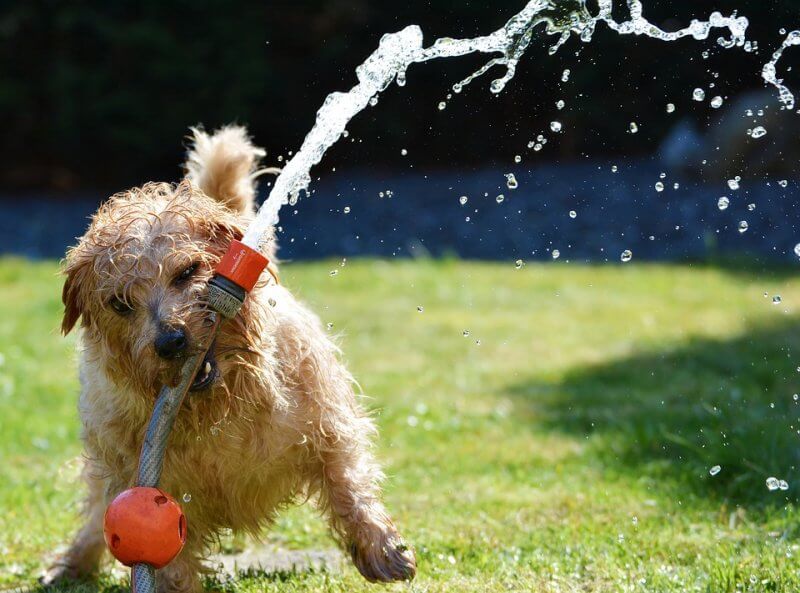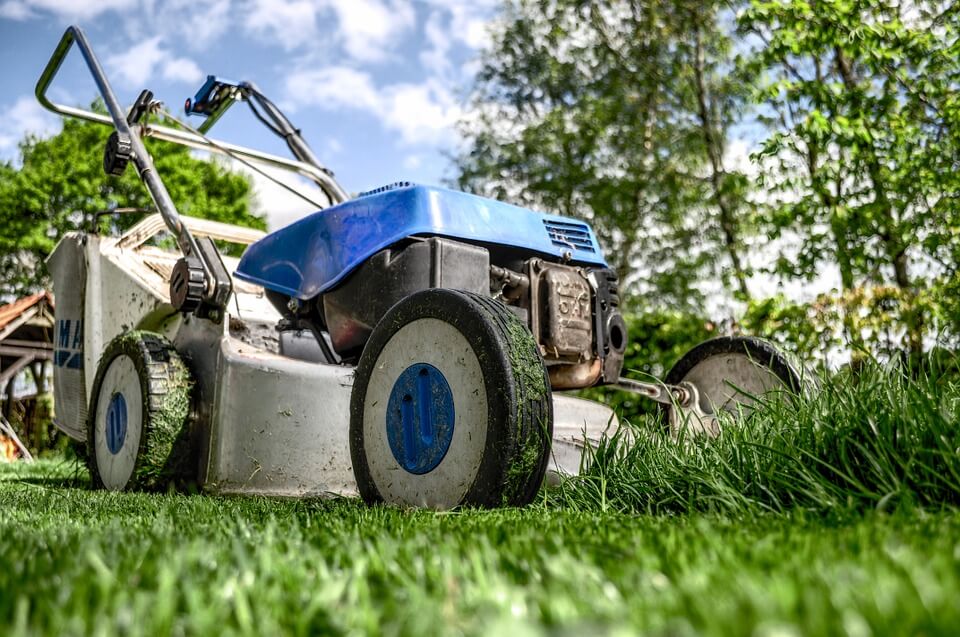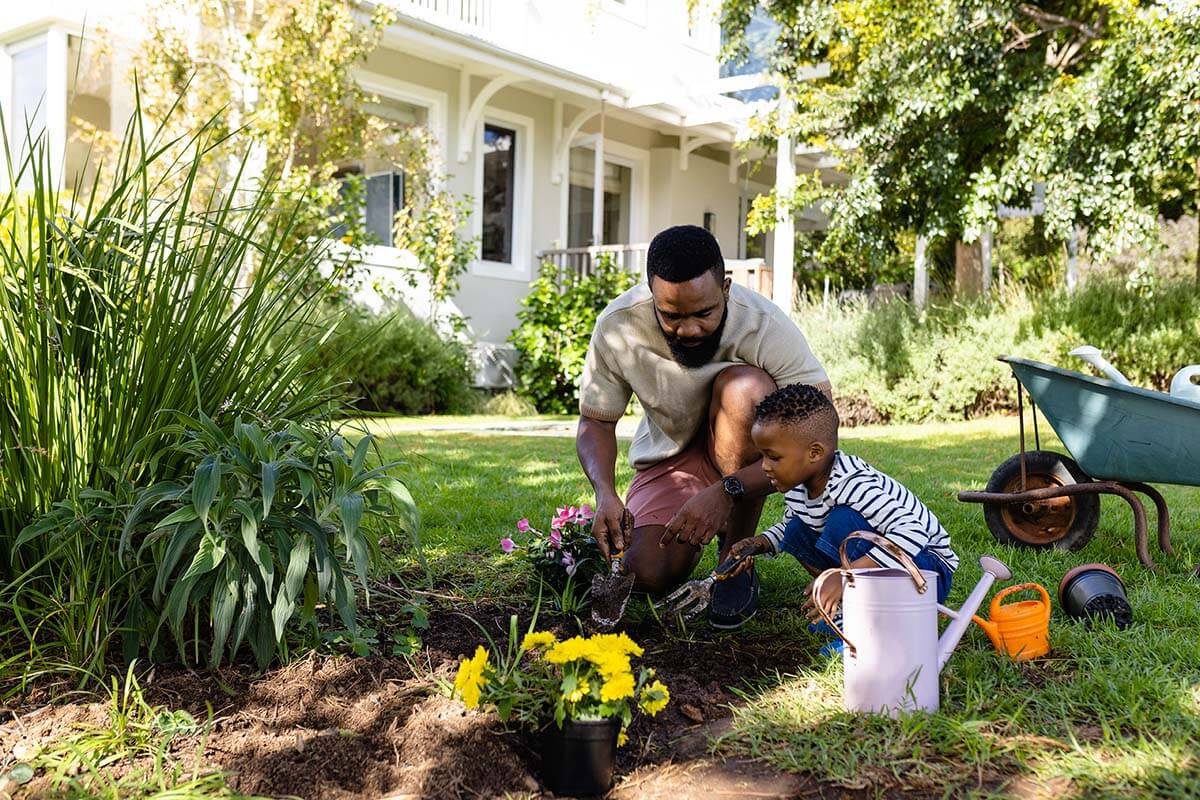Looking at the Top 5 Types of Grass to Consider for Your Lawn
With our local weather suddenly changing from blistering hot to freezing cold at the drop of a hat it can be quite difficult to maintain a lush, green lawn. But there are grass species that can help Canadian lawns look full and attractive for most of the year.
We’ve put together a breakdown of the top 5 types of grass for your lawn, in addition to landscaping and lawn care tips from our landscaping experts to help you get the lawn you’ve been dreaming of.
The Top 5 Kinds of Grass
The ideal grasses for lawns in Canada are cool-season turf grasses. These grasses have their main growth periods in spring and fall.
Lawns can include a mix of grasses to tolerate a greater range of conditions and be less vulnerable to pests. The following are the top five kinds of grass to use for lawns in Canada:
1 – Kentucky Bluegrass
This prominent grass in many lawn mixtures is popular for its fine to medium texture, deep blue-green colour, as well as its cold- and heat-hardiness. This grass can be grown from seed and fertilized regularly. It is also disease resistant.
It flourishes in the spring and fall and creates an attractive, highly-dense lawn.
Kentucky bluegrass needs full sunlight, and more sun than other types of grasses, especially in the morning. It also requires regular watering and good drainage due to its shallow root system.
Its ideal mow height is 6 to 8 cm.
2 – Ryegrass
Ryegrass is a strong grass that is tolerant to wear, so it is ideal for lawns that are used for sports, play areas, and foot traffic. It is can also withstand the winter and dry spells.
Although it can go without water for a while, this grass should be watered regularly. It needs fertilizing three to five times a year. And its ideal mow height is 6 to 8 cm.
Ryegrass may contain endophytes, a type of fungi that makes this grass more resistant to pests.
3 – Tall Fescue
This low-maintenance grass is compatible with other types of grass and grows well in both sun and shade. Its deep root system makes it the most heat-resistant of the cold-season grasses, and it can also tolerate drought.
While it is low-maintenance, tall fescue is slow to grow as a lawn. This grass is medium green with a fine texture and is bristle-leaved. Its ideal mow height is 6 to 8 cm. And it should only be fertilized two to four times a year.
Tall fescue may also contain endophytes, the type of fungi that makes grass more resistant to pests.
4 – Bermuda Grass
This warm-season grass thrives in hot weather, so it is ideal to mix with cool-season grasses. When the cool-season grasses die off in late spring, the Bermuda grass takes over.
Bermuda grass requires plenty of water to stay green. It needs lots of mowing and can be mowed to ½ to 1/8 inch.
5 – Canada Blue Grass
This hardy cool-season grass is very low-maintenance, with some drought tolerance, so it can handle moist to dry soil. It is a fine-textured creeper that can grow in poor, rocky, or sandy soil conditions.
While full sun is best for this grass, it can tolerate some shade (partial sunlight). And its ideal mow height is 7 to 10 cm.
Ideal Temperatures and Conditions for Growing A Lawn
Even Ground with Fertile Soil
Your lawn should be a gentle slope without any low spots. Soil that is deep, well-aerated, and loamy is preferred. It should have plenty of organic matter, be slightly acidic (pH 6.0 to 6.5), and have good drainage.
Good Water Supply and Sun Exposure
Ideally, your lawn will get most of its water supply from rain water. Of course, for a truly impressive lawn, you need a regular supply, which the weather doesn’t always agree with. If you’re not comfortable turning on a sprinkler, consider using rain barrels to gather water regularly before using perforated hoses to water your lawn. A healthy lawn needs at least six hours of sunshine every day to keep the grass growing.
Moderate Air Temperature
The ideal temperature to grow a healthy lawn is between 16 and 24 degrees Celsius. In some parts of Canada, and especially as temperatures rise year to year, your lawn might take a bit of a beating in 30-degree temperatures.
Cautious Foot Traffic
To prevent a yellow, worn-out path from developing on your lawn, keep foot traffic down and use actual pathways whenever possible.
What to Consider When Planning A New Lawn
When planning a new lawn and landscape design, ask yourself how you plan to use it. Will it be a play area for your family? Or will it be used to improve your home’s curb appeal?
You’ll also have to assess the current lawn area. Look for existing problems and other factors that will affect the health of your new lawn, including:
- Soil type—including pH, organic content, and fertility—which can be found with a soil analysis.
- The depth of the topsoil.
- Whether any weeds, insect infestations, or diseases are present in the existing soil.
- Whether the lawn has a deep slope.
- The drainage conditions of the lawn.
- The amount of sunlight the lawn gets each day—are there shady areas that have less than six hours of sunlight?
- How rainfall affects the lawn.
- How your region’s climate affects the lawn.
- If your current lawn is experiencing a pest problem, you’ll have to include a pest prevention plan as part of your overall plan.
Not sure where to start with a lawn plan? Here are a few suggestions to get you started:
- Improve drainage for wet areas.
- Replace grass with other types of landscaping for problem areas.
- Place fertile soil with organic matter at a good depth.
- Choose the right mix of grasses for the conditions.
- Identify and address any problems appropriately.
What to Consider When Preparing the Soil
Although you will be adding topsoil to your new lawn, you’ll also have to prepare the existing area and soil. To do so, remove debris from the existing soil. This includes garbage, large stones, branches, and concrete.
If the existing soil is compacted, loosen it. And for areas that don’t drain properly, fix the grade (slope) to ensure proper drainage.
To grow well, grass needs 10 to 20 cm of good top soil. When adding the top soil, work it into the existing soil to prevent drainage issues, especially if the existing soil is compacted. To work it in well, use a rototiller.
You may also wish to add the following to the soil to ensure excellent growing conditions for your lawn:
- Compost—acts as a fertilizer
- Lime to increase pH or sulfur to decrease pH
- Compost and peat moss to add organic matter
- Starter fertilizer to stimulate the growth of grass roots
- When finished, use a light rolling to firm up the soil
The type of grass you choose for you lawn will depend on the conditions. So for more help choosing the right grass for your lawn, contact your local Ottawa landscaping company. They can help you grow a lush, green lawn that will thrive.

In 2008, following a successful career as a member of the Canadian Alpine Ski Team, Jonathan Robert stepped into the landscaping industry, starting Jonathan Robert Landscapes. In the years since he’s quickly earned a reputation for high-quality work with creative designs and has been recognized in several industry-leading publications. Jonathan’s always got an eye on innovation and is always looking ahead to see what’s on the horizon in the industry. He works hard to stay on top of current guidelines, practices, and regulations. Jonathan is a member of Landscape Ontario, the International Concrete Paving Industry (ICPI), Canadian Nursery Landscape Association (CNLA), and is a Tech-Pro contractor.







